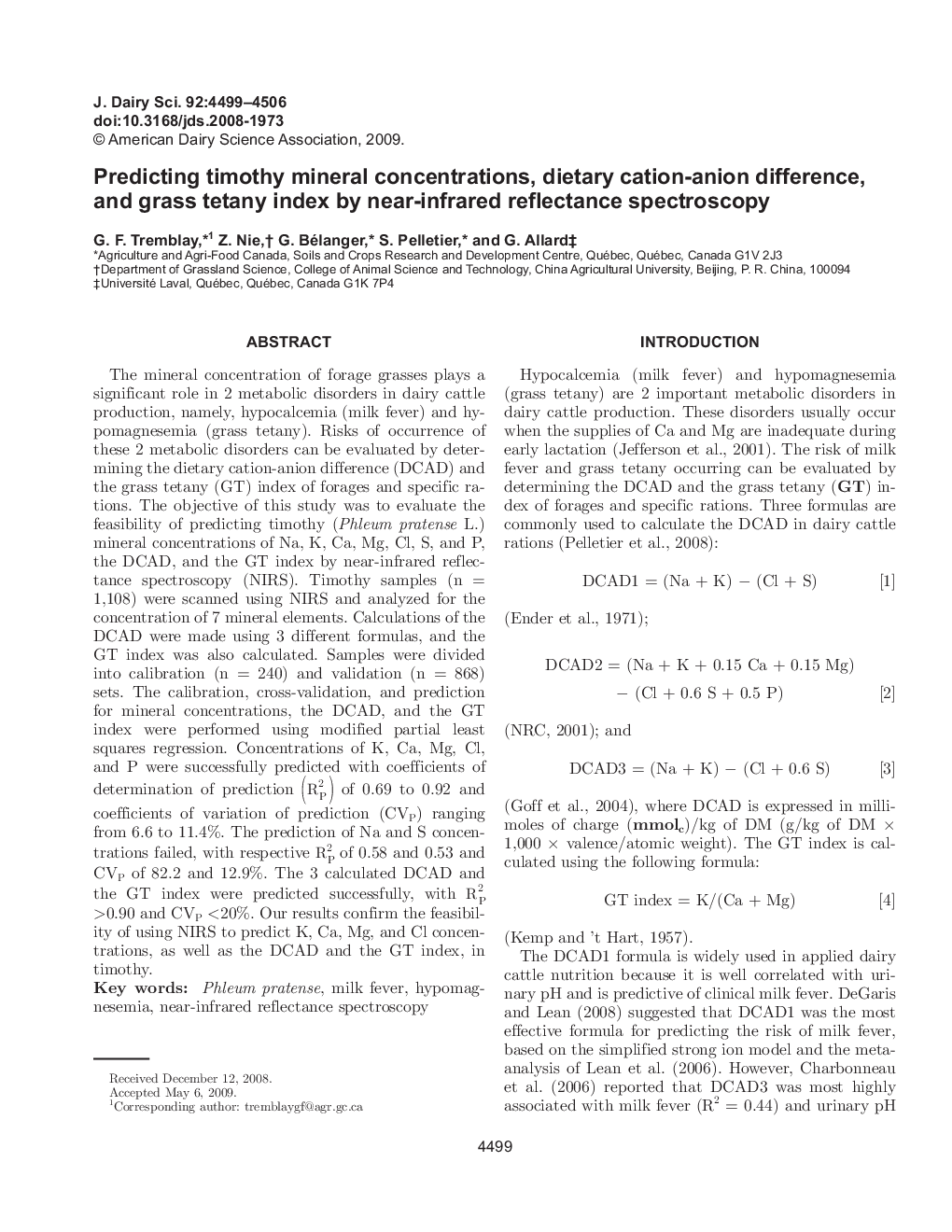| Article ID | Journal | Published Year | Pages | File Type |
|---|---|---|---|---|
| 2439476 | Journal of Dairy Science | 2009 | 8 Pages |
Abstract
The mineral concentration of forage grasses plays a significant role in 2 metabolic disorders in dairy cattle production, namely, hypocalcemia (milk fever) and hypomagnesemia (grass tetany). Risks of occurrence of these 2 metabolic disorders can be evaluated by determining the dietary cation-anion difference (DCAD) and the grass tetany (GT) index of forages and specific rations. The objective of this study was to evaluate the feasibility of predicting timothy (Phleum pratense L.) mineral concentrations of Na, K, Ca, Mg, Cl, S, and P, the DCAD, and the GT index by near-infrared reflectance spectroscopy (NIRS). Timothy samples (n = 1,108) were scanned using NIRS and analyzed for the concentration of 7 mineral elements. Calculations of the DCAD were made using 3 different formulas, and the GT index was also calculated. Samples were divided into calibration (n = 240) and validation (n = 868) sets. The calibration, cross-validation, and prediction for mineral concentrations, the DCAD, and the GT index were performed using modified partial least squares regression. Concentrations of K, Ca, Mg, Cl, and P were successfully predicted with coefficients of determination of prediction RP2 of 0.69 to 0.92 and coefficients of variation of prediction (CVP) ranging from 6.6 to 11.4%. The prediction of Na and S concentrations failed, with respective Rp2 of 0.58 and 0.53 and CVP of 82.2 and 12.9%. The 3 calculated DCAD and the GT index were predicted successfully, with RP2 >0.90 and CVP <20%. Our results confirm the feasibility of using NIRS to predict K, Ca, Mg, and Cl concentrations, as well as the DCAD and the GT index, in timothy.
Related Topics
Life Sciences
Agricultural and Biological Sciences
Animal Science and Zoology
Authors
G.F. Tremblay, Z. Nie, G. Bélanger, S. Pelletier, G. Allard,
